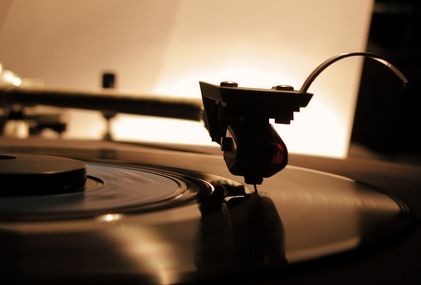Best Album Covers: The Low End Theory

This is the next entry in Best Album Covers, a series begun right here. The first successful long-playing microgroove record for the phonograph was introduced by Columbia Records back in June of 1948. Yet, album covers (the paper board packaging that held them) didn’t come into their own graphically till decades later. Eventually becoming the cultural stamp on the music of the time. Catching the eyes of potential record-buyers and later their ears and minds. Melding the musical experience with the artist into a unique visual form.
Why Compact Disc versions of album art don’t exactly raise the same reaction these days was looked at in this post. Although, music label artistry continues to be noticed and discussed among the material published today. The bits and bytes are looking over their shoulder, though, because vinyl hasn’t entirely gone the way of the dinosaur. Online or at the record shops still out there. Cover art hasn’t lost purpose, either for old and new. Mostly, it’s my contention while digital reigns supreme, its vigor among fans lacks the tactile passion of the past LPs.
Hence the reason for this series. Some register more with me musically than others, though. Yet, the artwork will always take center stage, at least here. Let’s continue shall we?

John Rush, for Allmusic, summarized one of the great albums and unlikely mash-ups of the early ’90s:
“While most of the players in the jazz-rap movement never quite escaped the pasted-on qualities of their vintage samples, with The Low End Theory, A Tribe Called Quest created one of the closest and most brilliant fusions of jazz atmosphere and hip-hop attitude ever recorded. The rapping by Q-Tip and Phife Dawg could be the smoothest of any rap record ever heard; the pair are so in tune with each other, they sound like flip sides of the same personality, fluidly trading off on rhymes, with the former earning his nickname (the Abstract) and Phife concerning himself with the more concrete issues of being young, gifted, and black.”
To be honest, the clear and only reason I listened to this album was one of the all-time great double bassists, Ron Carter1, was featured in this fusion of rap and jazz. While I’m not a regular enthusiast of the former, I am for the latter, so the excursion was worth it to re-experience one of the key players in my ’70s listening habits. Here, making more significant contributions in another genre; his bass lines alone made it so.
Cited as influential musically2, much can be inferred to what The Low End Theory‘s graphic lineage when it came to the artwork that graced its skin. The black that dominates the cover art, like The Dark of the Moon, another visual statement. Even the nude model, who looked like she stepped off a Ohio Players cover, dabbed in Paddy Crofton’s vibrant fluorescent makeup splashes off the sleeve much like Steely Dan’s Aja did.
Meant to be eye-popping, it’s that as well as alluringly Afrocentric. The use of red and green phosphorescent explode off the black background. Illustrative of the group’s music affirmation, its culture colorfully distinguishable. With photographs by Brooklyn’s Joe Grant and cover design by JK and ZombArt, the art surges off the album’s canvas as distinctly as the title hugs the dark figure’s low end. Well, that’s the theory3, so I’ve heard.

Artist: A Tribe Called Quest
Title: The Low End Theory
Date: 1991
Label: Conscious, Jive, RCA Records
Track Listing (and yes, turn those records over):
Side one
- “Excursions”
- “Buggin’ Out”
- “Rap Promoter”
- “Butter”
- “Verses from the Abstract”
- “Scenario”
Side two
- “The Infamous Date Rape”
- “Check The Rhime”
- “Everything Is Fair”
- “Jazz (We’ve Got)”
- “Showbusiness”
- “What?”
The entire series can be found here.
- Carter a double bassist as well as cellist, and a member of the Miles Davis Quintet in the early 1960s. A mainstay of CTI Records, he contributed to jazz fusion works by George Benson, Bob James, Walter Wanderley, Freddie Hubbard, Hubert Laws, Stanley Turrentine, Antonio Carlos Jobim, and Deodato. ↩
- “Engineer Bob Power has been quoted numerous times calling the album, “The Sgt. Pepper’s of hip hop” referring to Sgt. Pepper’s Lonely Hearts Club Band released by The Beatles in 1967.” ~ Wikipedia ↩
- Listed as one of the best Rap album covers ever. ↩


4 Responses to “Best Album Covers: The Low End Theory”
The ‘Tribe called Quest’ cover is fabulous!
LikeLiked by 1 person
It’s a stunner, alright. Thanks, Bruce. 🙂
LikeLiked by 1 person
Hey mate! Great post! Hope all is well with you; have been off the blog for a while but will be getting back into it shortly.
LikeLiked by 1 person
Good to see you back online, Mark. Thanks, my friend. 🙂
LikeLiked by 1 person